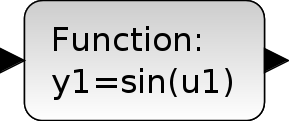
To do this, we call the strsubst() function with the following arguments: string variable name, string to be replaced, new string, as: Let’s suppose that we want to replace the blank spaces in sVar3 with lines '-'. In Scilab we have a predefined function called strsubst(), which care search within a string variable, a particular character or word, and replace it with another character or word (both strings). Since the tokens() function doesn’t store blank spaces, if we concatenate back the vector of words, we’ll get back a totally different string that the original one.Īnother very useful function is the Find (Search) and Replace function, which is common in all text editors. If we have a string which contains multiple words, like a sentence or phrase, we can split it in several words with the function tokens(). Observation: If the string contains a blank space, it will also be stored in an element of the vector.


To reconstruct the string back, starting from the vector of characters, we can use the function strcat(). Obviously, the size of the vector will be equal with the length of the string. The output will be a vector of strings, each element containing on character of the word. There are also predefined Scilab functions for splitting a phrase or sentence into individual words, or a word into characters.Ī single word string can be split into individual characters by using the predefined Scilab function strsplit(). For this we can use the predefined Scilab function convstr(), with the 'u' flag for upper case or 'l' flag for lower case. Sometimes we might need to convert the character of a string to either upper case or lower case characters. Calling it with a variable argument must return string. In order to check if a Scilab variable is a string, we can use the predefined function typeof(). If applied to a vector or matrix of strings, the length() function will return the length of each string in a numerical matrix format: The length of the string can be measured using the predefined length() function and it will return the number of ASCII characters in the string: It can be performed using the addition operator ( +): String concatenation means putting together (aside) two or more strings. Three basing operations performed on a string are: In the same variable we can also define a sentence ( sVar3) or even a matrix of strings ( sVar4). Īs you can see, a string can be defined as a single character ( sVar1) or a word ( sVar2). 'Medium & heavy trucks and buses' '11731405'. SVar3 = 'Medium & heavy trucks and buses' Let’s define the following strings in Scilab: sVar1 = 'w' "green") and it’s characterized by its length. In Scilab, a string is delimited by either single quotes (e.g.

#Scilab output matrix code
The complete list of characters is given by the ASCII (American Standard Code for Information Interchange) standard. The characters can be either letters, numbers, symbols or punctuation marks. Defining strings in Scilabīy definition, in the programming/coding world, a string is any finite sequence of characters. Taking into account that sooner or later the Scilab user will need to define and format strings in Scilab, we should have a solid understanding on how strings can be defined and which are the main predefined function for handling. Scilab is quite powerful in handling string variables.


 0 kommentar(er)
0 kommentar(er)
